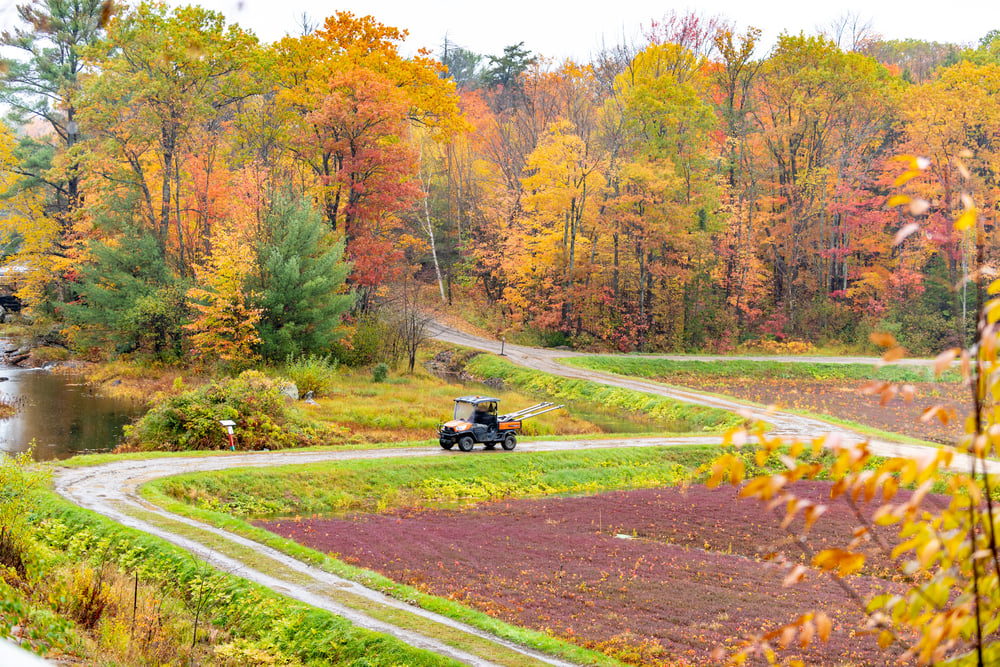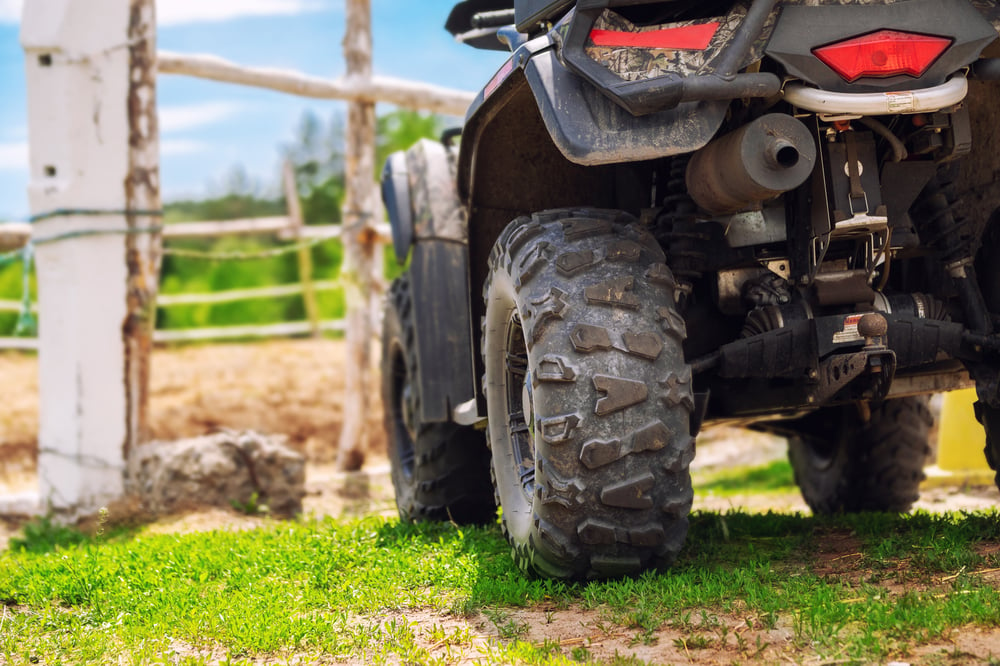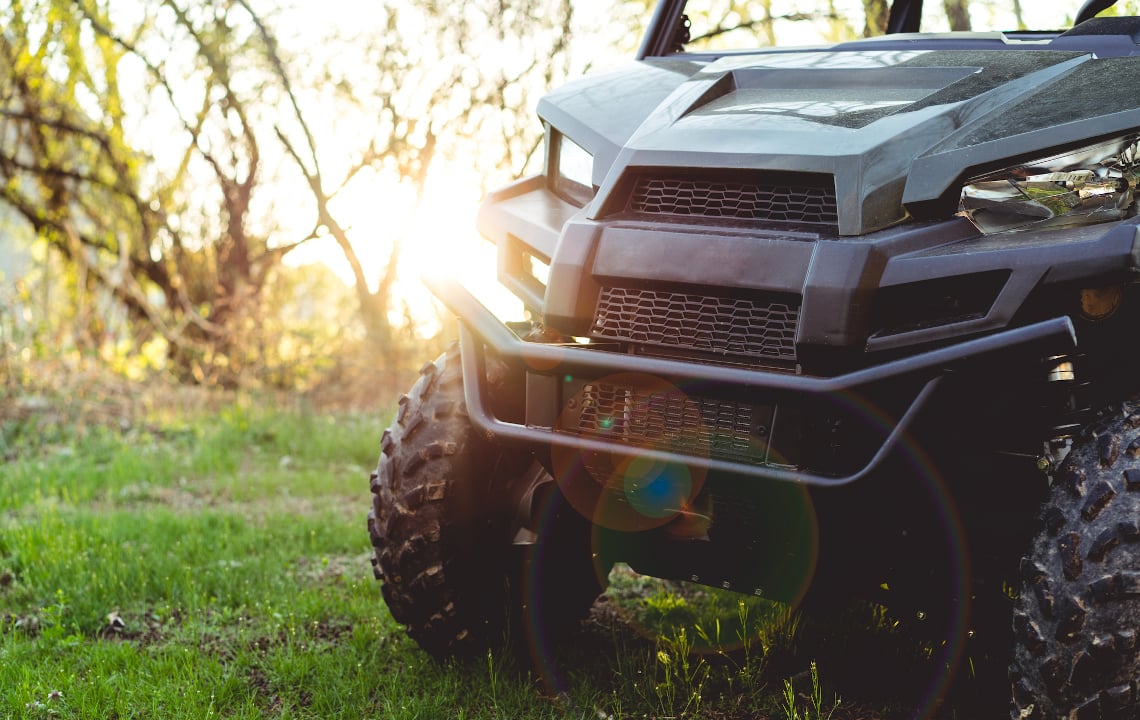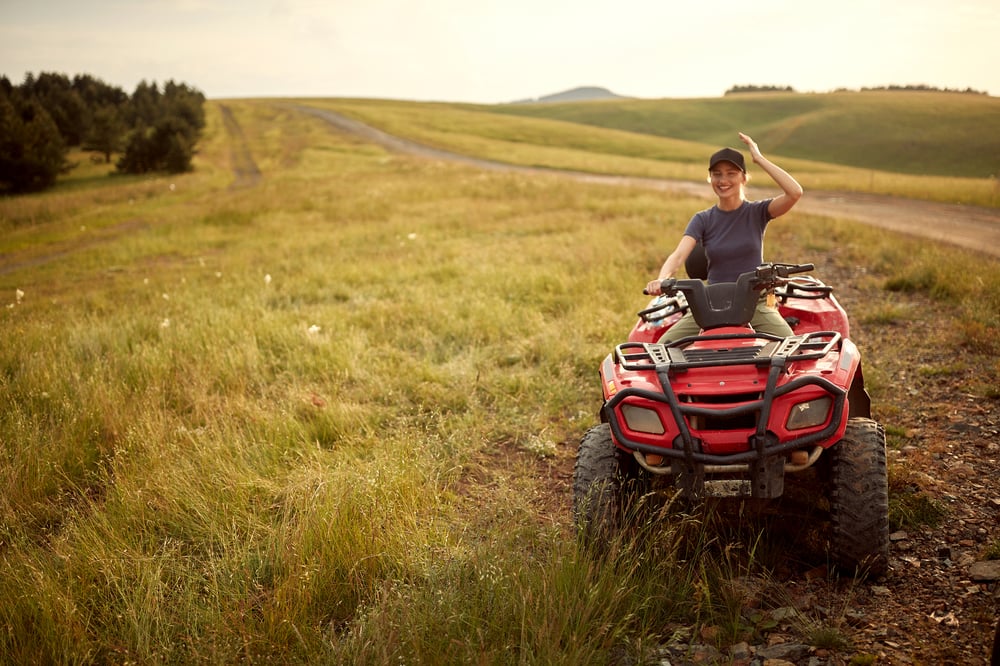Learn how to buy the right ATV or UTV for your rural land with these simple tips from a 20+ year industry expert.
Brian Fisher and his wife Melissa started in the ATV/UTV industry in 1998. Since then, they've owned a dealership, created a TV show about the off-road lifestyle, and opened a guided tour and rentals business in Middle Tennessee.
In just the past year, the Fishers have owned more than 100 off-road vehicles through their tour business, which Brian says has taught him a lot about the current market, especially the side-by-side UTVs that have become so popular with landowners.
For those new to this topic, ATV stands for All Terrain Vehicle. These are typically used for off-road recreational purposes. UTV stands for Utility Terrain Vehicle (aka: side-by-sides), which are designed to be used for working and hauling vs. recreation.
"The market for ATVs and UTVs is overwhelming, frustrating and confusing if you don't know anything about it," Brian says.
Here, Brian breaks it down for you with five tips for picking the right vehicle.

Tip #1 Set a Budget
Avoid overwhelm and decide on your budget before shopping. The price range on Brian's recommended vehicles varies widely — from $12,000 on the low end up to $30,000.
Special features, such as enclosed cabins with heat and air, can push the cost towards the higher end of the range. Vehicles with additional seating — six seats as opposed to three, for example — tend to run higher as well.
It all depends on your needs. If this purchase is a toy, maybe you spend less. And if it's a business investment that you'll use for towing, plowing, mowing or other serious farm work, maybe you plan to spend more.
Tip #2 Consider Maintenance and Repairs
Unless you can service the vehicle yourself, plan for maintenance when choosing a brand.
"You want to take into consideration which dealers you have near you, what brands they sell, how soon they can get you in if you're not mechanically inclined." Brian says. "They're going to break, things are going to wear out."
In addition to choosing a brand you can have serviced locally, he says to look at the most reliable manufacturers, especially those that honor their warranties.
"You're going to end up paying more in the long run for some brands that are more maintenance-driven," says Brian. "Not all of the manufacturers stand behind their warranties. Can-Am, Yamaha, Kawasaki and even Honda — those manufacturers really stand behind their warranties. I had a vehicle in the shop for eleven months waiting on a part and finally, it got to the point where Yamaha put a whole new engine in it and extended the warranty."
Brian says he has a go-to list of models he recommends based on maintenance, service, reliability and warranty.
Brian's go-to list of models:
- Can-Am Defender - $12,000 - $30,000
- Kawasaki MULE PRO-FXT - $16,000
- Yamaha Viking - $15,000
- Polaris Ranger Crew XP 1000 - $22,000
Tip #3 Look at the Land You'll Be Navigating
Some vehicles are better than others for different terrain types. Is your property flat or hilly? Does it have sandy or boggy areas? These factors will affect choices about two-wheel or four-wheel-drive and ground clearance.
"If you have flat land, Kawasaki is great for that," Brian says. "The ground clearance and the four-wheel-drive aren't as good on those though. For ground clearance, the Defender and the Ranger are more capable. With terrain that's rocky or swampy, they would do much better."
And if your property has boggy areas or other places where you anticipate you'll need good traction, he says to plan for upgrading from standard tires for better performance.
"The first place manufacturers cut corners is tires. They use the cheapest tires possible." he says. "If you decrease the air pressure [to get better traction], you've just decreased your ply rating and your load rating. You're decreasing the integrity of the tire and making it more susceptible to cuts and blow-outs. You want to pick a tire that's going to be best suited for your vehicle."
Tip #4 Consider Engine Size, Suspension and Braking Power
Side-by-sides [UTVs] can do serious farm work — from towing heavy loads to hauling attachments for mowing, plowing and more. But choose an engine powerful enough to do what you want.
"Most of your utility vehicles, depending on the cc's, from 800 to 900 to 1,000 cc's, most will have a 2,000-pound tow rating," Brian says. "Just about all of those big dogs like that you're going to be able to pull 1,500 pounds of wood or corn or fertilizer or fencing. You can definitely load them down."
In addition to engine size, consider suspension, weight and braking power.
"If you're going to be doing a lot of heavy hauling you want to look at suspension — something that has adjustable shocks — for the added weight. Brian says.
"And there's a big difference between towing something and stopping something. If you're trying to tow 2,000 pounds and it's not a very big side-by-side — if you're going down a hill and you don't have good braking or tires, it's going to push you down the hill. I've seen that with rough-cut mowers and wagons full of wood. Stopping is what you need to worry about.
“I always opt for a six-seater. It rides better and it handles better. You have a bigger payload and towing capacity. It weighs more and hauls things better."

Tip #5 Test Drive to Find the Right Fit
Brian says his best advice is to test drive a vehicle before buying it. Decide on your budget and figure out what features you need. Once you've narrowed it down, get behind the wheel of the vehicles on your shortlist.
"Go to an off-road event or a farm and ag expo. The manufacturers will bring out the utility versions of their vehicles and you can drive them he says.
"Once you start sitting in the vehicle, you figure out how it feels for your height, your size. Some of the seats don't move backwards or forwards, and it's a stretch for a shorter person to reach the gas pedal. If you're using it for four, five or six hours a day you're going to get fatigued."
And he says older people or those with physical issues should pay close attention to how they feel after driving a vehicle.
"There are some side-by-sides out there that do not have the power steering option. They might be cheaper, but I would always go with power steering," says Brian. "When you're out there really working you're going to be fatigued. The last thing you need to do is get burnt out and not be able to do anything when you're done using it."
For more information on off-road vehicles, visit Brian's YouTube channel.
Check out our other articles on tools and toys for your rural land:
Must-Have Tools and Accessories for Gardeners
Must-Have Tools, Toys and Tractors for Rural Acreage
5 gadgets every gardener should have


























